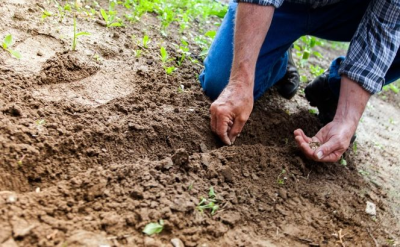PREPSOIL
What do bread, biochemicals and bioenergy have in common? Biocircularcities knows the answer

Bread prepared with flour from coffee silverskin (a residue from coffee roasting), biochemicals produced from previously unused forestry residues, or waste collection vehicles powered by biomethane from municipal biowaste. These are things that you might be able to see in the coming years in Naples, Pazardzhik, and Barcelona, all thanks to the BBI-JU funded Biocircularcities project.
Over the past two years, researchers and experts in waste management joined forces with the Metropolitan Area of Barcelona, the Metropolitan City of Naples, and the Province of Pazardzhik, to analyse more sustainable future scenarios for three different value chains: municipal biowaste management, agro-industrial organic waste, and forestry residues. The project has now just reached its end, but it is just the beginning of a new adventure as the seeds planted by the partnership are ready to grow and innovative biocircular systems about to be implemented in the pilot territories.
How to make organic value chains more circular: from theory to practice
Eager to inspire by sharing their story and the approach they followed, the Biocircularcities partners gathered in Brussels on 28 September for a final conference. The experts from the project explained how making the three value chains at stake more biocircular could significantly reduce the environmental and economic impact, as shown by the Life Cycle Analysis (LCA) and Life Cycle Costing (LCC) analysis run. Aware of the importance of an enabling policy framework, partners also highlighted different local, regional, and national policies that could contribute to make these practices more widespread, such as support for environmental impact assessments to facilitate decision making, or financial instruments such as green public procurement or VAT reduction to promote bio-based products.
The three pilot territories shared their perspective on this two-year journey, emphasizing the key impacts of the project and their plans for the near future. An important part of their work was to engage local stakeholders and connect them with the researchers and experts of the project to reach concrete results taking into consideration end-users. To deepen this topic, the Waystup! project explained how several European cities received support for the citizen’s engagement in biocircular transitions, insisting on the need to explore the detailed behaviours of inhabitants to better understand the practical challenges that they face to adopt more sustainable habits.
Biocircularcities and after?
Considering the potential benefits of all explored scenarios, the pilot partners are now in discussions with local decision makers and key stakeholders to prepare the practical implementations. Pazardzhik intends to continue to exploit on the pilot scenario dedicated to a decentralized biorefinery producing biochemical products. In Naples, the successful example from the coffee chain provides a motivation to spread and to develop the circularity of other value chains of the agro-food industry such as waste coming from tomato processing that could be transformed into bioplastics. The Metropolitan Area of Barcelona is already planning to focus on food waste prevention in 2024 and, at the same time, to implement the upgrading of biogas into biomethane. To ensure the sustainability of the new value chains, all local partners agreed on the careful selection of sustainable organic waste collection and transport systems, as the high carbon footprint of the collection itself was one of the key findings of the LCA carried out.
The future of Biocircularcities results at European level
As a legacy, the project is not only leaving improved local organic waste management scenarios but also a webtool to assist local waste experts and decision makers in identifying relevant technologies for the processing of a variety of organic waste and residues. The tool takes into consideration the local context and the objectives regarding the bio-based end-products considered or the environmental performance. The web tool is on the one hand building on data to be entered by the user related to the available feedstock and current organic waste management system, the type of bio-based end-product targeted, the potential environmental performances targeted, and political and economic incentives.
On the other hand, it has an integrated background database for technology selection that, in combination with the user’s answers, produces a ranking of 14 integrated technologies and explains the results and technologies.
The Biocircularcities project has been yet another proof of how important it is to connect cities, regions and countries, to learn from each other and to capitalise on existing experience. This is why seven like-minded projects joined the final conference to showcase their own activities and draw bridges to build a strong circular bioeconomy in Europe.
A recording of the event as well as the different presentations are available on the event page.












